BOEM Seeks Public Comment for Eleventh National Outer Continental Shelf Oil and Gas Leasing Program
and Comments (RFI) will publish in the Federal Register on April 30, 2025. BOEM is seeking an array of information and comments, including but not limited to information associated with the economic, social, and environmental values of all OCS resources, as well as the potential impact of oil and gas exploration and development on other OCS resources and on the marine, coastal, and human environments. This comment period will be the first of three in the multi-year and multi-phase planning process for the 11th National OCS Program. How to Comment:The public comment period will run from April
![“Our province has been shaped by the Atlantic Ocean. It can be extremely cold, extremely unforgiving. If it works here, it will work anywhere. The technology we [develop and] use here can be adapted to anywhere else in the world. We are adaptive, we're nimble, we're problem solvers. And at the end of the day, we are collaborative."
Minister Andrew Parsons, Industry, Energy & Technology, Newfoundland & Labrador, Canada. Photo courtesy the office of Minister Andrew Parsons](https://images.marinetechnologynews.com/images/maritime/w200h200padcanvas/province-been-shaped-153427.jpg)
NL Government Helps Power Regional Maritime, Offshore Energy, Subsea Tech Cluster
Marine Institute, which is a gem in itself with an amazing group of marine tech training, research and development.The PeopleThe environment is unique, sometimes harsh, always beautiful. The facilities are world-class, born in the fisheries, refined and globally expanded on the back of offshore oil and gas exploration. But the magic of Newfoundland & Labrador is the people: arguably the nicest collection of 500,000+ people on the planet, but also the most innovative and technically adept.“We are lucky to be surrounded by generations of brilliant Newfoundlanders and Labradorians with expertise
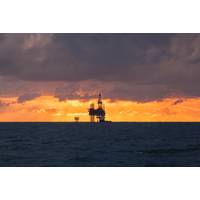
TGS and Petrobras Enter Tech and Research Partnership
and technological development activities in Brazil.Under the memorandum of understanding (MOU), the partners will seek to drive innovation in the energy sector through collaborative efforts to develop new technologies and conduct advanced research to increase efficiency and sustainability in oil and gas exploration and production. Additionally, the firms will aim to innovate in renewable energy technologies and carbon capture solutions.Petrobras and TGS will work together on the development of innovative technological solutions, focusing on improving the efficiency of exploration and production operations
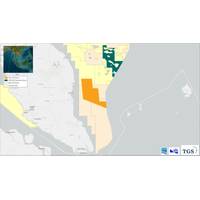
Survey to Assess CCS and New Oil & Gas Opportunities Gets Underway Off Malaysia
partners to spearhead exploration in this region through a state-of the-art Geostreamer multi-client 3D acquisition program,” said Kristian Johansen, CEO of TGS."This survey marks a change in how clients use newly acquired multi-client seismic data. In addition to the traditional oil and gas exploration activities, this data will be used to facilitate assessment CCS potential.“By acquiring multi-client seismic data with our Ramform vessels and GeoStreamer technology we will provide high quality regional scale seismic data that will improve regional understanding of the subsurface
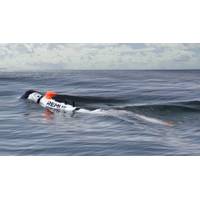
HII Mission Technologies Unveils New REMUS 130 UUV
specifically for customers seeking the long service life of REMUS UUVs, along with the proven modularity and open architecture of the REMUS 300 and 620 models at a reduced cost.The REMUS 130 is built for a variety of missions and operations, including data collection and research, offshore oil and gas exploration, search and rescue and mine countermeasures operations.The REMUS 130 features modern core electronics, navigation and communications systems with modular, open architecture interfaces to accommodate wet or dry payloads, including custom payloads developed by the user.The HII REMUS UUV series
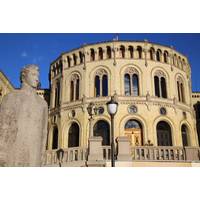
Norway Parliament Votes in favor of Seabed Mining
a moratorium.There is yet no set timeline for when exploration could begin, although the plan is to award companies exclusive rights to exploration and potential extraction from specific areas after an after application process.The process will be modelled on that established for Norway's oil and gas exploration, while matters such as taxation would be debated at a later stage, a policy maker told Reuters."We're now going to see if this can be done in a sustainable manner, and that is the step we have taken now," Energy Minister Terje Aasland told parliament.The amended version of
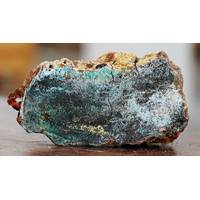
EXPLAINER-Why Does Norway Want to Mine the Seabed?
PROPOSE?The Labour-led minority government has proposed to open about 280,000 square km (108,000 square miles) of ocean areas between Jan Mayen island and the Svalbard archipelago. Its proposed plan follows similar principles to the opening of offshore areas to oil and gas exploration. From the overall area on offer, smaller zones, or blocks, would be offered to companies to explore and produce from.While international rules for seabed mineral extraction are yet to be set, Norway doesn't need to wait, because it plans to explore for minerals on its extended continental
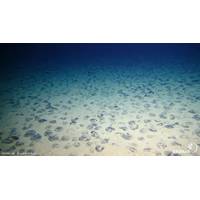
Norway Should Call Off Deep Sea Mining Plans, Key Ally Says
Conservative party, which initiated the opening process in 2020, as well as the right-wing Progress Party. Still, Haltbrekken said deep sea mining was "high on our agenda" and "an important issue for us". In 2021, SV blocked the government's plans to conduct oil and gas exploration licensing round in frontier areas.Parliament is set to discuss the government's bill this autumn, although a specific date for debates has yet to be set. (Reuters - Reporting by Victoria Klesty and Nerijus Adomaitis, editing by Gwladys Fouche and Timothy Gardner)Deep-Sea Mining
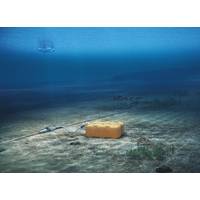
CGG's Sercel Sells 6000 Seabed Nodes to Sinopec
French seismic data firm CGG said Tuesday that its subsidiary Sercel had made a major sale of its GPR300 seabed nodal solution to Sinopec, the Chinese oil and gas exploration, refining, and distribution company. Over 6,000 nodes will be deployed this month in the Bohai Sea off the east coast of mainland China, CGG said.According to CGG, based on Sercel’s QuietSeis MEMS technology, the GPR300 delivers "unprecedented broadband signal sensing capability and fidelity, and ultra-quiet performance to enable best-in-class subsurface imaging and outperforms conventional OBN equipment. With its


 February 2025
February 2025





